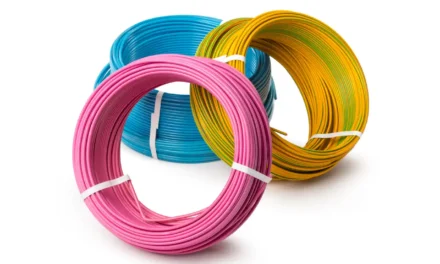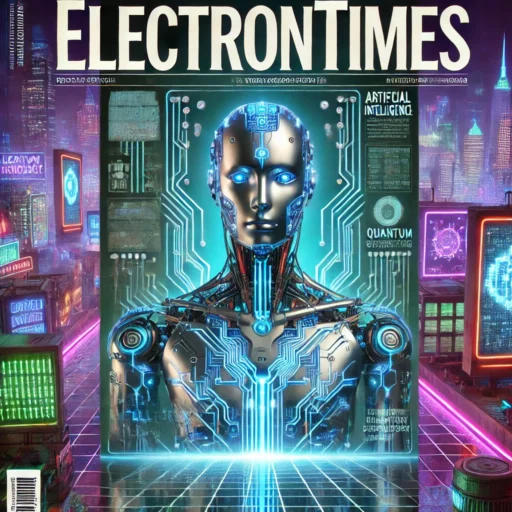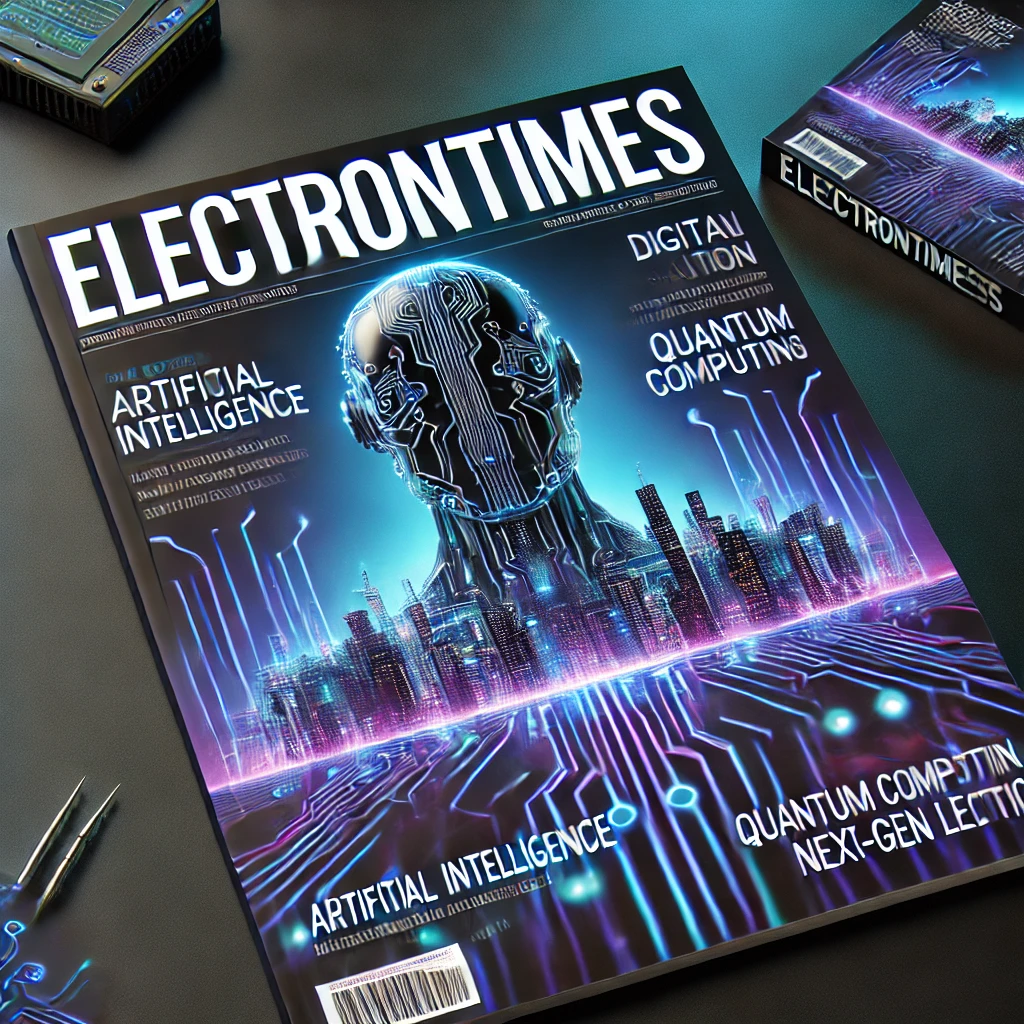Sensors play a crucial role in industrial electronics, as they provide the necessary data for monitoring, controlling, and automating various industrial processes. These devices convert physical parameters (such as temperature, pressure, humidity, and flow) into electrical signals that can be interpreted by control systems like Programmable Logic Controllers (PLCs), Human-Machine Interfaces (HMIs), and other automation equipment. The information provided by sensors enables operators to monitor system performance, ensure safety, and optimize efficiency in industrial operations. Here’s a breakdown of the role sensors play in industrial electronics:
1. Data Acquisition and Monitoring
Sensors are the primary means of acquiring real-time data in industrial systems. By monitoring key parameters, sensors enable the tracking of various factors that impact performance, safety, and operational efficiency.
- Temperature Sensors: Monitor the temperature of equipment or processes, such as in furnaces, boilers, or refrigeration systems, to ensure they stay within safe operational ranges.
- Pressure Sensors: Measure pressure levels in pipes, tanks, and vessels, ensuring that pressure does not exceed safe limits, preventing accidents like leaks or explosions.
- Flow Sensors: Track the flow rate of liquids and gases, enabling precise control of material processing, and ensuring the proper flow in piping systems.
- Proximity Sensors: Detect the presence or absence of objects or parts, often used in automated assembly lines, robotic systems, and material handling to trigger actions or detect anomalies.
- Vibration Sensors: Measure vibrations in machinery such as motors, pumps, and turbines, used to detect mechanical imbalances or signs of wear, enabling predictive maintenance.
- Humidity Sensors: Monitor moisture levels in environments where humidity control is crucial, such as in food processing, pharmaceuticals, or HVAC systems.
2. Automation and Control
Sensors enable industrial automation by feeding information into control systems like PLCs and SCADA systems. These systems then process the data and adjust operations accordingly.
- Closed-loop Control: Sensors are a key part of closed-loop control systems, where feedback from sensors is used to adjust parameters in real-time. For example, a temperature sensor can send data to a control system, which adjusts the heating element to maintain a constant temperature.
- Open-loop Control: Sensors can also be used in open-loop systems, where they monitor conditions but do not actively control the system. For instance, they might track product quality or detect faults without directly adjusting the equipment.
- Real-time Monitoring: Sensors allow for continuous monitoring of industrial processes, ensuring they remain within optimal ranges and enabling automated responses to changes.
3. Safety and Protection
Sensors are critical in maintaining safety within industrial environments. They help detect hazardous conditions and trigger protective actions to avoid damage to equipment or harm to personnel.
- Overload Protection: Sensors like current sensors and temperature sensors can detect if machinery is operating beyond safe limits (e.g., overheating or drawing too much current). These readings can trigger alarms or safety shutdowns to prevent equipment failure.
- Gas Detection: In industries such as oil and gas, chemicals, and pharmaceuticals, gas sensors monitor for the presence of dangerous gases such as carbon monoxide, methane, or hydrogen sulfide, activating safety protocols to evacuate workers or shut down systems.
- Smoke and Flame Detection: In environments where fire hazards exist, smoke and flame sensors provide early warning to prevent catastrophic fires. They are critical in industries like manufacturing, energy production, and mining.
4. Process Control and Optimization
Sensors are fundamental in controlling industrial processes and improving operational efficiency.
- Feedback Loops: Sensors continuously provide data to the control systems, which use it to make decisions and fine-tune processes. For example, a flow sensor in a liquid distribution system may detect changes in flow rate and adjust pumps to maintain the desired rate.
- Energy Management: Sensors monitor power consumption, temperature, and pressure to ensure efficient use of energy. Smart sensors can identify inefficiencies or areas of waste, helping industries reduce costs and improve sustainability.
- Predictive Maintenance: By monitoring the performance of critical equipment (e.g., motors, pumps), sensors can predict when a part is likely to fail based on factors like temperature rise, vibrations, or changes in pressure, allowing for proactive maintenance and reducing downtime.
5. Environmental Monitoring
In many industrial settings, maintaining a safe and regulated environment is critical to both product quality and regulatory compliance.
- Air Quality Sensors: These sensors monitor the concentration of pollutants or gases in the air, ensuring the workplace complies with environmental standards and promoting worker health.
- Water Quality Sensors: Used in industries like food and beverage, pharmaceuticals, and water treatment, sensors monitor water quality by detecting parameters such as pH, turbidity, and dissolved oxygen.
- Noise Sensors: Used to measure noise levels in manufacturing facilities or power plants, ensuring compliance with occupational health and safety standards.
6. Robotics and Automation Systems
In robotics, sensors play a key role in enabling precise movement, orientation, and interaction with the environment.
- Vision Sensors: Cameras and vision sensors help robots detect objects, measure distances, and identify features for tasks such as sorting, assembly, or quality control.
- Force/Torque Sensors: These sensors measure the force applied by robotic arms or grippers, allowing robots to handle delicate materials or adjust their actions based on the resistance they encounter.
- Position and Motion Sensors: Encoders and gyroscopes help track the position and movement of robotic arms or machinery, ensuring that they perform tasks accurately.
7. Remote Monitoring and Industrial Internet of Things (IIoT)
Sensors in industrial automation systems are often part of the Industrial Internet of Things (IIoT), enabling remote monitoring and control over networks.
- Wireless Sensors: These sensors transmit data wirelessly to central systems, enabling remote monitoring and minimizing the need for physical inspections in hard-to-reach areas or hazardous environments.
- Integration with Cloud Systems: Sensors can feed data to cloud platforms, enabling real-time analytics, machine learning, and predictive maintenance capabilities across distributed networks.
- Edge Computing: In IIoT systems, edge devices collect and process sensor data locally before sending it to the cloud or central control systems, enabling quicker decision-making and reducing network bandwidth use.
8. Quality Control and Testing
Sensors are integral to quality control and testing processes in industries such as manufacturing, food processing, and electronics.
- Dimensional Sensors: These sensors measure the size, shape, or dimensions of a product to ensure it meets specifications. Common types include laser displacement sensors and vision systems.
- Inspection Sensors: Light sensors and photoelectric sensors are used to detect defects or inconsistencies in products, ensuring that only high-quality items are sent to the next phase of production.
9. Integration with Automation Systems
Sensors enable seamless integration with other parts of industrial automation systems, such as actuators, motors, and PLCs. They allow devices to “speak” with each other and work together to achieve automated control over entire processes.
- Modular Sensors: Modern industrial systems often feature modular sensor setups that can be integrated into larger networks of devices. For example, a sensor can be added to a PLC-based control system via standard communication protocols such as Modbus, Ethernet/IP, or Profibus.
Conclusion
Sensors are vital to the function and success of industrial electronics and automation systems. They provide the essential data needed to monitor, control, and optimize processes while ensuring safety, efficiency, and quality. By continuously measuring key parameters and feeding this information into control systems, sensors enable automated operations, predictive maintenance, and precise process control, all of which contribute to improved productivity and reduced costs in industrial environments.
Hashtags
#TemperatureSensors #PressureSensors #ProximitySensors #FlowSensors #LevelSensors #MotionSensors #VibrationSensors #GasSensors #HumiditySensors #OpticalSensors #AutomationSensors #ControlSensors #FeedbackSensors #IndustrialControlSystems #AutomationTechnology #ProcessControlSensors #ClosedLoopControl #RealTimeAutomation #IndustrialSensorIntegration #PLCIntegrationWithSensors #PredictiveMaintenance #ConditionMonitoring #IndustrialMaintenanceSensors #VibrationMonitoring #SensorBasedDiagnostics #MaintenanceSensors #ProactiveMaintenance #IndustrialAssetManagement #RemoteMonitoringSensors #SmartMaintenance














